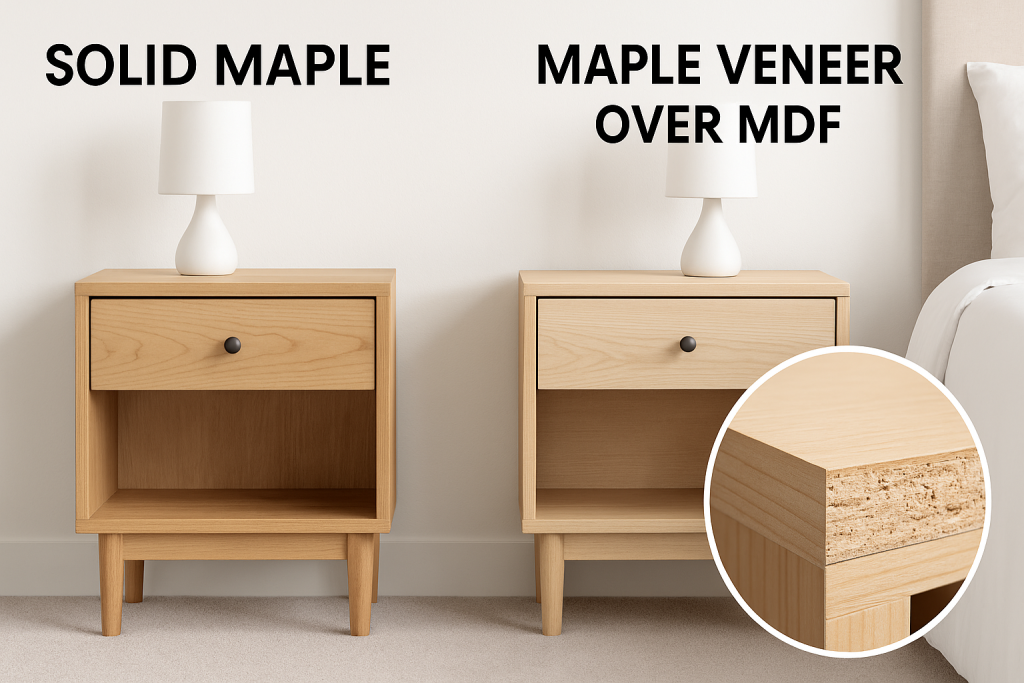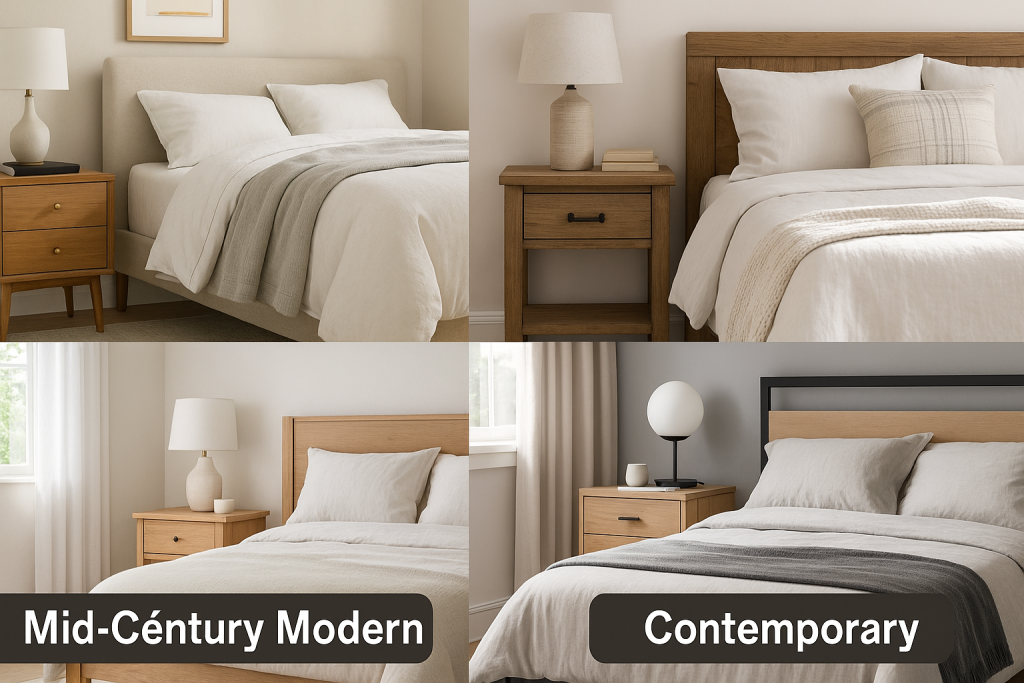Okay, so you’ve set your heart on a maple nightstand. Great call! Seriously, it’s one of those choices you won’t regret. Maple has this amazing, timeless vibe—it’s sturdy enough to survive a few house moves and beautiful enough that you’ll never get tired of looking at it.
But wait! Before you hit that “add to cart” button or get swayed by a pretty picture online, let’s talk. I’ve been there, staring at a dozen tabs, trying to figure out which one is actually a good deal. There’s a huge difference between a nightstand that just looks good and one that’s genuinely well-made.
So, how do you make sure you get a great one?
I’ve boiled it down to seven key things you should have on your radar. Trust me, thinking about these now will save you a headache later.
1. Solid Wood or Veneer? Let’s Get Real About What’s Inside.

This is probably the biggest thing you need to wrap your head around because it affects the price and how long the piece will last.
- Solid Maple: This is the real deal. The whole thing is made from solid cuts of maple wood. It’s heavy, strong, and it’s the kind of thing you can pass down or sell for a decent price years later. The best part? If you get a scratch or a dent, you can actually sand it down and refinish it. It’s a true investment piece.
- Maple Veneer: Now, don’t get me wrong, veneer isn’t necessarily bad—you just have to know what it is. A veneer piece has a super-thin layer of real maple wood glued onto a core, which is usually a cheaper material like MDF or particleboard. Think of it like gold-plated jewelry versus solid gold. It looks great on the surface and costs less, but if you get a deep gouge in it, you can’t really fix it.
My take? If you’re looking for your “forever” furniture, save up for solid wood. If your budget is tight or you like to change your style every few years, a good-quality veneer is a totally fine option.
2. Finding Its Vibe: Does It Match Your Room?

A nightstand shouldn’t feel like it landed from outer space. Take a look around your room. What’s the vibe? Maple is awesome because it’s a bit of a style chameleon.
- Is your room Mid-Century Modern? Think Mad Men—clean, simple, with those cool skinny legs that angle outwards.
- More of a Farmhouse person? You’ll want something that feels a bit more solid and rustic, maybe with a slightly worn-in finish and chunkier handles. Cozy, comfy, like something you’d find in a high-end country cottage.
- Love that Minimalist or Scandinavian look? Go for something super simple, with a light, natural finish and maybe an open shelf instead of clunky drawers.
Just try to find a piece that speaks the same language as your bed and dresser. It’ll make the whole room feel more pulled-together.
3. What’s Its Job, Anyway? (It’s More Than Just Looking Pretty)
Okay, honest moment: what’s currently on your nightstand? Is it a chaotic pile of a half-read book, your phone, a glass of water, and hand cream? Or is it just a lamp and a single, stylish coaster?
Be real about what you need. If you’re a clutter-piler like me, you absolutely need drawers. A single drawer can be a lifesaver for hiding all the little odds and ends. If you’re a tech person, some newer nightstands even have built-in USB ports to tame that octopus of charging cables. It’s a game-changer.
Don’t just fall for a pretty face! Make sure it can handle the job you’re going to give it every single day.
4. Size Matters. Seriously.
This is a super simple trick that designers use, and it makes a huge difference. Getting the scale wrong can make your whole room feel “off.”
- Height: Your nightstand should be about the same height as the top of your mattress, or maybe an inch or two taller. You don’t want to be doing a weird yoga stretch in the middle of the night just to grab your water.
- Width: Got a huge, king-sized bed? A tiny little nightstand next to it will look silly. On the flip side, a massive nightstand can totally swallow a small bedroom. Do yourself a favor: grab a tape measure and see what feels right in your space. And if you have the room, getting a matching pair for either side of the bed always looks fantastic.
5. The Final Look: Natural or Stained?
Maple has a naturally gorgeous, creamy-light color that can brighten up a room. That’s probably the look you’re picturing. A simple clear coat on top protects it and lets that natural beauty shine through.
But maple is also kinda cool because you can stain it. Because its grain is so fine, it takes on a darker stain really evenly. So you can get the strength of maple but with the look of a darker wood like walnut or cherry if that matches your other furniture better. It’s all about the final look you’re going for.
6. The ‘Boring’ Stuff That’s Actually Super Important: Construction.
Okay, stick with me here, because this is the stuff that separates a 2-year nightstand from a 20-year one. When you’re in a store or looking at detailed photos online, check these things:
- The Drawers: If you can, look at how the drawers are put together. See those little interlocking puzzle pieces on the corners? That’s called a dovetail joint, and it’s a sign of really good quality. It means it was built to last, not just stapled together.
- The “Wobble Test”: If you’re in a store, give it a gentle shake. Does it feel solid, or does it wobble? A solid piece won’t budge.
- The Glides: Open a drawer. Does it slide smoothly and quietly, or does it screech and stick? Trust me, you’ll appreciate smooth glides every single morning.
7. Keeping It Pretty for the Long Haul.
The good news? Maple is tough. But you still want to treat it right.
It’s pretty simple, really. Use a coaster for your drinks to avoid the dreaded white water ring. Don’t use harsh chemical sprays on it—a soft, damp cloth is usually all you need. It’s a small effort to keep your new favorite piece of furniture looking great for years and years.
So, Are You Ready?

See? It’s not so complicated once you know what to look for. Thinking about these seven things—the material, the style, the function, the size, the finish, the construction, and the care—takes you from being just another shopper to being a smart, informed buyer.
Now you’re ready to go out there and find a piece you don’t just like, but one you absolutely love. Happy hunting!











